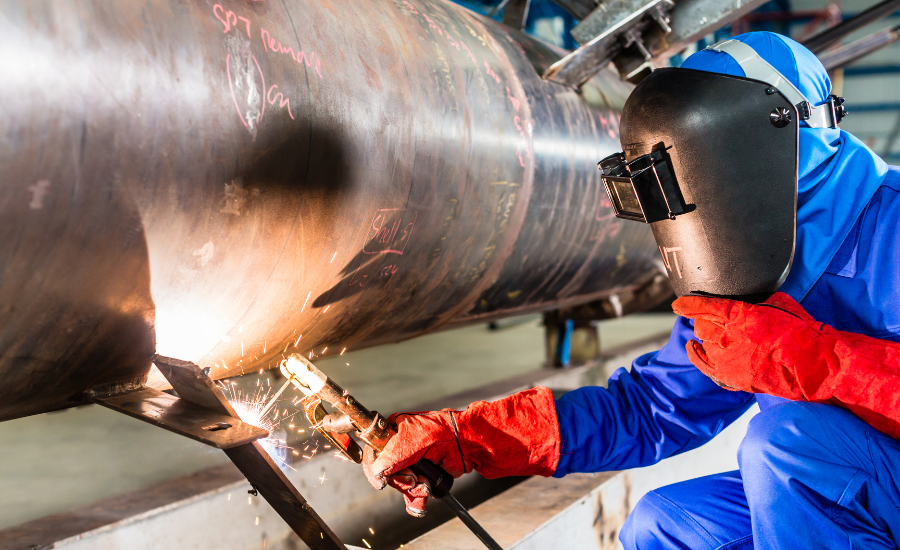In industries where fluids or gases flow under extreme pressure — such as oil & gas, chemical processing, power generation, and shipbuilding — the smallest leak or fitting failure can lead to costly downtime or even catastrophic accidents. That’s why selecting the right pipe fittings is crucial. These components must withstand not just pressure but also temperature fluctuations, corrosion, and vibration — all while maintaining seamless flow and system integrity.
If you’re sourcing from leading Pipe Fitting Manufacturers in India, understanding which fittings and materials perform best in high-pressure conditions can make all the difference. Here’s a comprehensive guide to help you choose the right pipe fittings — from Buttweld Fittings to Elbows and more — for demanding, high-pressure applications.
Understand the Application and Pressure Rating
Every high-pressure piping system is unique. Before selecting fittings, it’s essential to analyze:
- Operating Pressure and Temperature: Fittings must handle the system’s maximum pressure without deformation or leakage.
- Fluid or Gas Type: Corrosive, flammable, or abrasive fluids require materials resistant to chemical wear.
- System Environment: Consider exposure to saltwater, chemicals, or extreme temperatures.
The pressure rating (often expressed in PSI or class ratings like 3000#, 6000#, etc.) determines which fittings can safely handle your system’s load. Choosing under-rated fittings can lead to premature failure — a risk no industrial setup can afford.
Choose the Right Type of Fittings
Different piping systems call for different connection styles. Here are the most common types used in high-pressure applications:
a) Buttweld Fittings
These are the preferred choice for high-pressure pipelines where strength and leak-proof performance are critical. Buttweld Fittings are welded directly to the pipe, creating a smooth, continuous flow path that minimizes pressure drop.
Advantages:
- Seamless and durable joints
- Excellent resistance to vibration and internal pressure
- Suitable for large-diameter and high-pressure lines
Common Types: Elbows, Tees, Reducers, and Caps
b) Socket Weld and Threaded Fittings
Ideal for smaller pipe sizes, these fittings are forged for strength and are commonly used in compact, high-pressure systems.
Advantages:
- Easy installation and maintenance
- Suitable for high-pressure hydraulic and steam systems
Common Standards: ASME B16.11
c) Elbows
Elbows are vital for changing the direction of flow in a pipeline. In high-pressure applications, welded or seamless elbows are preferred to ensure structural integrity and minimal turbulence.
Types:
- 90° Elbow: Changes direction by 90 degrees — widely used in compact layouts.
- 45° Elbow: Used where gradual direction change is needed to reduce pressure loss.
- 180° Elbow: For U-shaped turns in return lines.
When sourcing Elbows, make sure they comply with ASME B16.9 for Buttweld types or ASME B16.11 for Forged types.
Select the Right Material
Material selection is one of the most important aspects of high-pressure fitting design. The material must withstand stress, corrosion, and temperature without compromising performance.
Common Materials Used:
- Stainless Steel (SS 304, SS 316): Excellent corrosion resistance and durability; ideal for chemical, marine, and food industries.
- Carbon Steel (ASTM A105): High tensile strength and cost-effective; commonly used in refineries and steam systems.
- Alloy Steel (ASTM A182 F11/F22): Superior resistance to heat and pressure; suitable for power plants and boilers.
- Duplex & Super Duplex Stainless Steel: High corrosion resistance in saltwater and aggressive environments.
Top Pipe Fitting Manufacturers in India use these materials to ensure fittings meet both mechanical and environmental demands.
Verify Manufacturing Standards and Quality
Always ensure that the fittings comply with international standards such as:
- ASME B16.9: Wrought Buttweld Fittings
- ASME B16.11: Forged Socket Weld and Threaded Fittings
- ASTM Standards: Material testing and composition requirements
Additionally, check if your manufacturer provides:
- Hydrostatic and non-destructive testing (NDT)
- Dimensional accuracy verification
- Mill test certificates (MTC) and traceability reports
Reliable manufacturers not only meet standards but also maintain consistent quality through precision forging, heat treatment, and finishing processes.
Consider Long-Term Maintenance and System Efficiency
High-pressure systems demand fittings that ensure long-term reliability with minimal maintenance. Seamless Buttweld Fittings and precision-engineered Elbows provide smoother internal surfaces, reducing turbulence, erosion, and pressure loss — leading to greater efficiency and longer service life.
Additionally, using corrosion-resistant materials lowers the frequency of replacements, saving both time and operational costs in the long run.
Final Thoughts
Selecting the right fittings for high-pressure applications is a blend of science, engineering, and experience. From Buttweld Fittings that ensure seamless flow to Elbows that handle directional changes without compromising pressure, every component plays a crucial role in system safety and efficiency.
Partnering with reputed Pipe Fitting Manufacturers in India ensures that your fittings are built to international ASME/ANSI standards, tested for durability, and tailored to withstand the toughest industrial conditions.
When it comes to high-pressure piping, precision is power — and the right fittings make all the difference.


